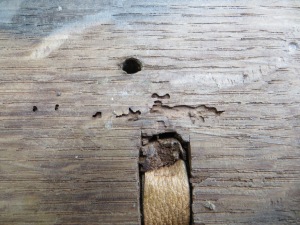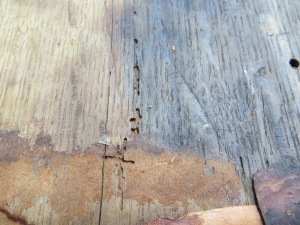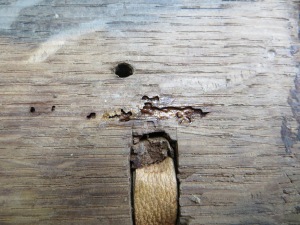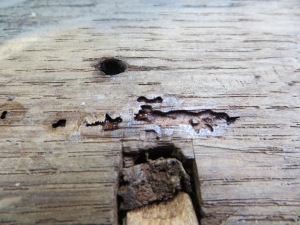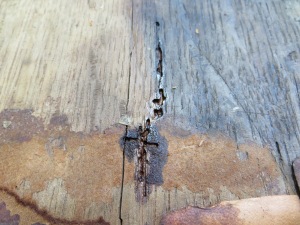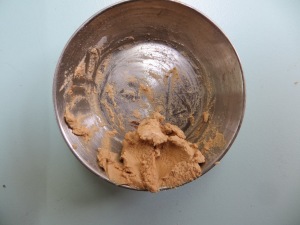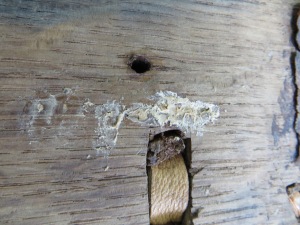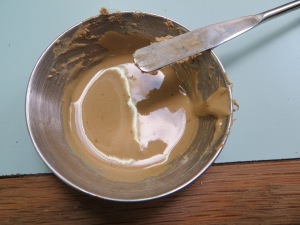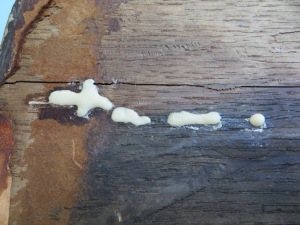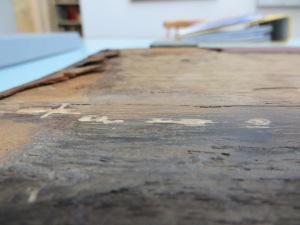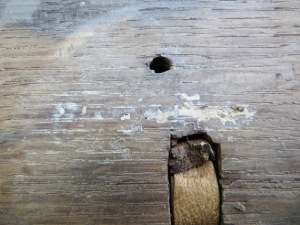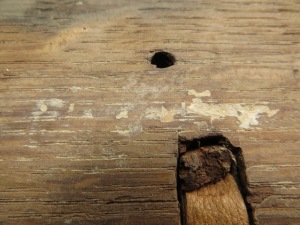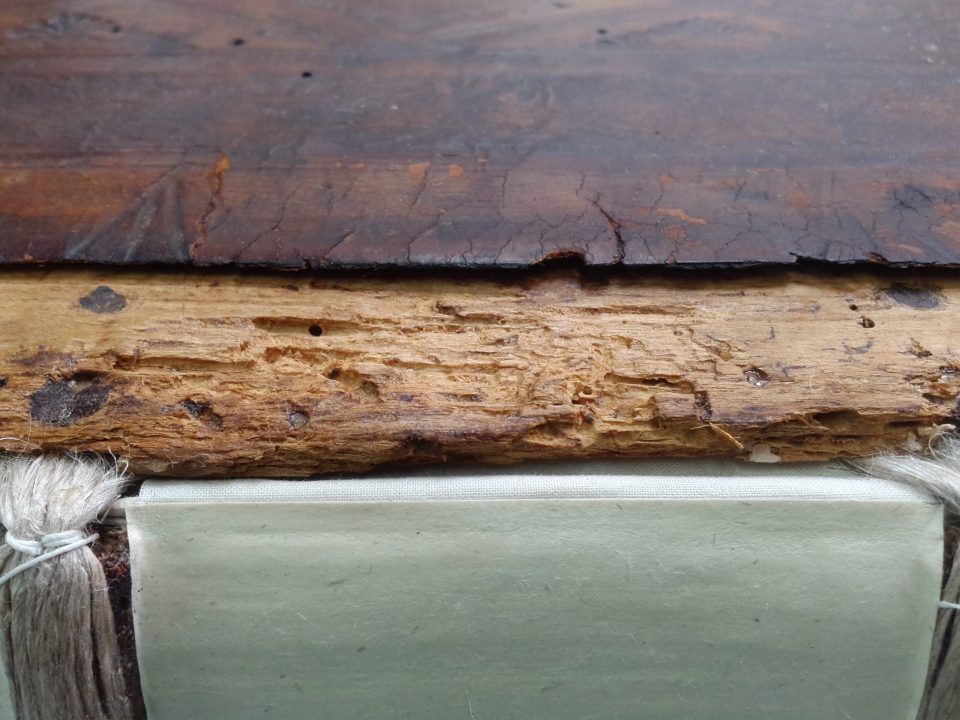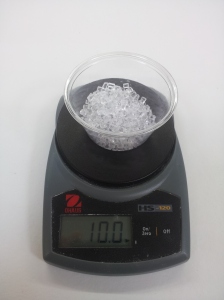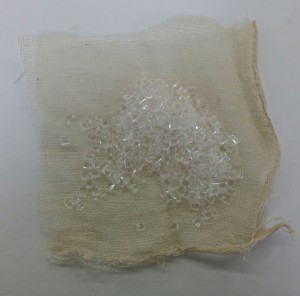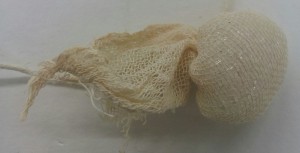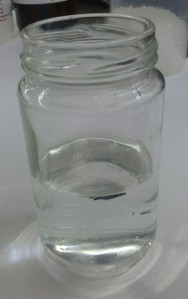So, I’ve found some spare wooden boards in the studio that have perfect woodworm holes to practice on.
I’ve also spoken with the Objects Conservator at The Royal Cornwall Institute – Laura Radcliffe about how best to go about the infills, she’s given me some good pointers, and I’ve followed her instructions with some changes or tweaks…
First of all, I’ve primed the area to be filled with the 10% Paraloid solution, by flooding the tunnels and holes, making sure all the walls are covered to prevent any of the infills seeping into the surrounding wood. I did this twice, just to make sure.
Notice that it really discolours any leather that it comes into contact with.
I then made up a mixture of the micro balloons, with two drops of burnt umber acrylic ink (Daler Rowney). At this point it’s like flour, and adding the paint doesn’t seem to do anything – you can’t mix it up.
Using small metal pots (or glass or ceramic, but not plastic) pour out a little of the 40% Paraloid, and add the micro balloons and acrylic slowly, stirring all the time. For the first test I made up a thick putty-like mixture:
This I scraped onto the boards with a small spatula, pressing it down into the holes – like using Polyfilla. It did not look great, and the solvent evaporated so quickly that it became really stringy and difficult to work – sticking more to the spatula than the wood.
So I thinned it down, by adding a splash at a time of the 10% Paraloid solution, until the filler was the consistency of double cream. This needs constant stirring, as the mix tends to separate into the balloons on top and the solvent underneath – kind of like a horrible scum/foam!
Using the pointy end of the spatula, I was able to dribble this mix into the areas to be filled, agitating slightly to make sure of an even coverage. Leaving the filler raised above the surface of the wood to be sanded/cut down later.
When semi-dry, I was able to scrape off the top layer, so the fill was about level with the surface of the board, and then re do the process after it had completely dried, as the fill had shrunk very slightly. The end results of both areas #1 and #2 were sanded down with fine grit sandpaper.
Area #1 needed some further fills after sanding down, as there were still some voids. I did this with the thinner mixture, and sanded again afterwards.
This type of treatment has worked really well for these small holes, I have yet to experiment with the solvents (ethanol/acetone) to remove the filler residue from around the holes. But if that works, then the fills can be tidied up a lot easier, and will cut down on the amount of sanding the fills need.
